Trees Birds Mammals Fish Amphibians Reptiles
Wild Algarve
Bookshop
Boletus reticulatus Schaeff. - Summer Bolete
Phylum: Basidiomycota - Class: Agaricomycetes - Order: Boletales - Family: Boletaceae
Distribution - Taxonomic History- Etymology - Identification - Culinary Notes - Reference Sources
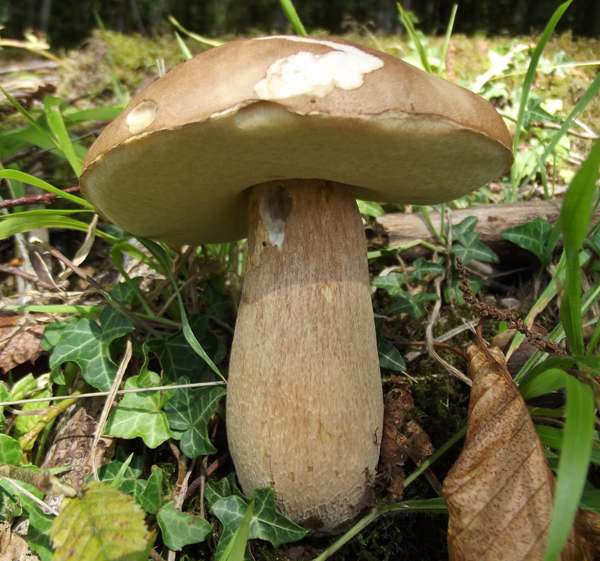
Boletus reticulatus, sometimes referred to as the Summer Cep, is just as good to eat as its famous close relative, Boletus edulis (Cep or Penny Bun Bolete).
Distribution
A rare find in Britain and Ireland, Boletus reticulatus is much more common in southern Europe, particularly in the south west of France and parts of Portugal.
This ectomycorrhizal species is found in broadleaf woodlands with beech and less often oaks, but occasionally it occurs under spruces, Boletus reticulatus fruits a little earlier than Boletus edulis.
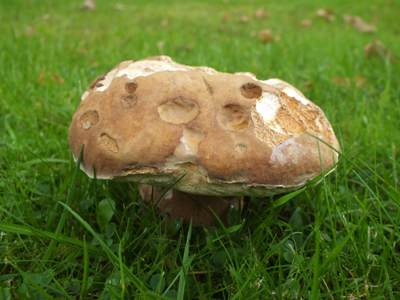
Most boletes, and all of those that commonly occur in Britain and Ireland, are ectomycorrhizal fungi, forming mutualistic relationships with the root systems of trees or shrubs. The fungi help the tree to obtain moisture and vital minerals from the soil, and in return the root system of the tree delivers energy-rich nutrients, the products of photosynthesis, to the fungal mycelium. Although most trees can survive without their mycorrhizal partners, boletes (and many other kinds of forest-floor fungi) cannot survive without trees; consequently these so-called 'obligately mycorrhizal' fungi do not occur in open grassland.
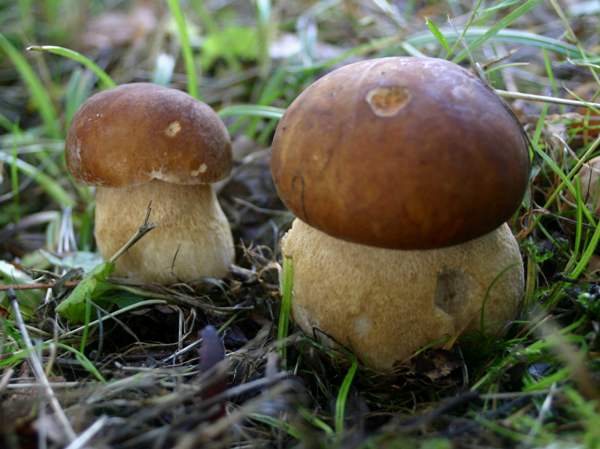
In the book Fascinated by Fungi (see the sidebar on this page for brief details and a link to full information, reviews etc) there is a good selection of magnificent mushroom menus all based on our 'Magnificent Seven', and Boletus edulis is, of course, one of the seven; substituting Boletus aereus in no way detracts from the excellence of a meal.
Taxonomic history
This large, edible bolete was described in 1793 by French mycologist Jean Jacques Paulet (1740 - 1826), who called it Boletus aestivalis; its currently accepted name dates from 1774, when this species was formally described by Jacob Christian Schaeffer and renamed Boletus reticulatus.
Until recently this large to massive bolete was most commonly referred to as Boletus aestivalis (Paulet) Fr. Among its many other synonyms you may see Boletus edulis ssp. reticulatus (Schaeff.) Konrad & Maubl., and Boletus edulis f. reticulatus (Schaeff.) Vassilkov.
Etymology
The generic name Boletus comes from the Greek bolos, meaning 'lump of clay', while the specific epithet reticulatus is a reference to the strongly reticulated or net-like pattern on the stem of this bolete. (Its synonymous specific name aestivalis means 'summer.)
Identification guide
Key features that help distinguish Boletus reticulatus from Boletus edulis are the absence of a broadish pale band around the cap rim; an initially velvety cap surface, which often wrinkles and sometimes cracks with age; and a white or brown net-like pattern (reticulum) that usually extends well down the stem and sometimes right to the base. Stem shape is not a good indicator, as some are round and dumpy, as in the example shown above, while others are cylindrical - such a stem is illustrated in the table below.
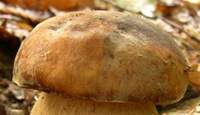 |
Cap
Initially velvety but soon a wrinkled or finely cracked granular surface, the light yellowish-brown to mid-brown caps of Boletus
reticulatus typically range from 10 to 20cm diameter at maturity. Unlike Boletus edulis, the cap margin is
not markedly paler than the centre. When cut, the soft cap
flesh usually remains white. (Picture: ArchEnzo, Italy) |
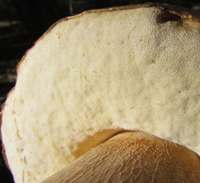 |
Tubes and Pores
The tubes (seen when the cap is broken or
sliced) and the pores are white, becoming greenish yellow when old.
When cut or bruised, the pores and tubes of Boletus reticulatus do not change colour significantly. |
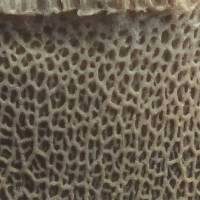 |
Stem
A paleer raised net-like pattern (known as a reticulum) is
visible on the usually mid-brownish background of the stem surface, darkest towards the apex and at the base and usually somewhat paler and pinker near the swollen centre of the stem. Occasionally clavate (club-shaped) but
more often barrel-shaped, the stem of Boletus reticulatus is 8 to 18cm tall and 2.5 to 6cm in diameter
at its widest point. The stem flesh is white and not as firm as the flesh of either Boletus edulis or Boletus aereus. |
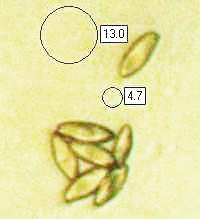 |
Spores
Subfusiform, smooth, 13-15 x 4.5-5.5μm.
Spore print
Olivaceous snuff-brown. |
Odour/taste |
Boletus reticulatus has an earthy smell and a pleasant mild taste. |
Habitat & Ecological role |
Boletus reticulatus grows on soil beneath mainly broadleaf trees, notably beech and oaks. |
Season |
June to October in Britain and Ireland, the Summer Bolete can be found through to February in some parts of southern Europe. |
Similar species |
Boletus edulis has a pale stem with a white reticulum; its brown cap has a whitish marginal region.
Boletus aereus has a darker cap and much firmer flesh.
Tylopilus felleus has a darkish stem reticulum on a paler background, and a pinkish tinge to
its pores; it has a very bitter taste. |
Culinary Notes
Use Boletus reticulatus in any recipe where Ceps (Boletus edulis) are called for, as these are two of the world's finest edible fungi and their texture and taste are almost identical.
In the book Fascinated by Fungi (see the sidebar on this page for brief details and a link to full information, reviews etc) there is a good selection of magnificent mushroom menus all based on our 'Magnificent Seven', and Boletus edulis is, of course, one of the seven; substituting Boletus aereus in no way detracts from the excellence of a meal.
If you want to improve your chances of finding the best edible boletes, it helps a great deal if you look in the right kinds of places and under the trees that these magnificent mushrooms are most commonly linked to. There is a lot more information on this topic, including chapters detailing which fungi species are obligately mycorrhizal and the kinds of tree each is associated with, in Fascinated by Fungi.
Reference Sources
Fascinated by Fungi, 2nd Edition, Pat O'Reilly 2016, reprinted by Coch-y-bonddu Books in 2022.
British Boletes, with keys to species, Geoffrey Kibby (self published) 3rd Edition 2012
BMS List of English Names for Fungi
Roy Watling & Hills, A.E. 2005. Boletes and their allies (revised and enlarged edition), - in: Henderson, D.M., Orton, P.D. & Watling, R. [eds]. British Fungus Flora. Agarics and boleti. Vol. 1. Royal Botanic Garden, Edinburgh.
Dictionary of the Fungi; Paul M. Kirk, Paul F. Cannon, David W. Minter and J. A. Stalpers; CABI, 2008
Taxonomic history and synonym information on these pages is drawn from many sources but in particular from the British Mycological Society's GB Checklist of Fungi.
Acknowledgements
This page includes a picture kindly contributed by Geoff Dann.
Top of page...
Fascinated by Fungi. Back by popular demand, Pat O'Reilly's best-selling 450-page hardback book is available now. The latest second edition was republished with a sparkling new cover design in September 2022 by Coch-y-Bonddu Books. Full details and copies are available from the publisher's online bookshop...